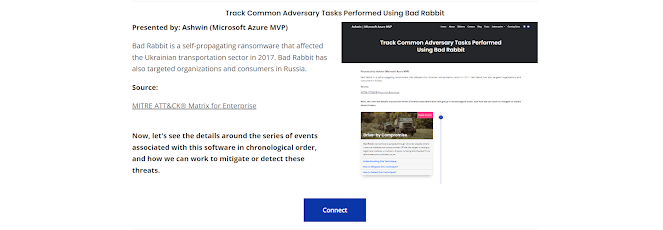Track Common Adversary Tasks Performed Using Bad Rabbit
To know more about it, you can go through my detailed document by clicking here
Overview
Bad Rabbit is a self-propagating ransomware, that mainly targets Ukrainian transportation sectors as well as Russian consumers. This ransomware locks up the victim's system or network from accessing any files, servers, or files until a ransom is paid (generally in Bitcoin).
How Does It Works?
Bad Rabbit appeared in 2017 and is very similar to the ransomwares like WannaCry and Petya. It spreads via drive-by downloads on a malicious or compromise website posing as a Adobe Flash Installer and when the victim clicks on the malicious link, the users files will be encrypted and a message like- "If you see this text, your files are no longer accessible. You might be looking for ways to recover them. Don't waste your time." After that a ransom in bitcoins is demanded along with a deadline to fulfill it, however, the payment does not always help in unlocking the encrypted files.
Remedy
If your system is infected with Bad Rabbit, then, you can follow these steps:
- Contact law enforcements.
- Disconnect from the other computers, networks, or servers connected to your system.
- Use knowledge of threat intelligence to understand the situation.
- Decide a proper response as ransomwares like screen-lockers are easier to remediate, while, the others might require proper file recovery from backup.
- Free ransomware decryption tools might also help but they can't work for every type of ransomware.
- Restore your files via backup.
To know more about it, you can go through my detailed document by clicking here




Comments
Post a Comment